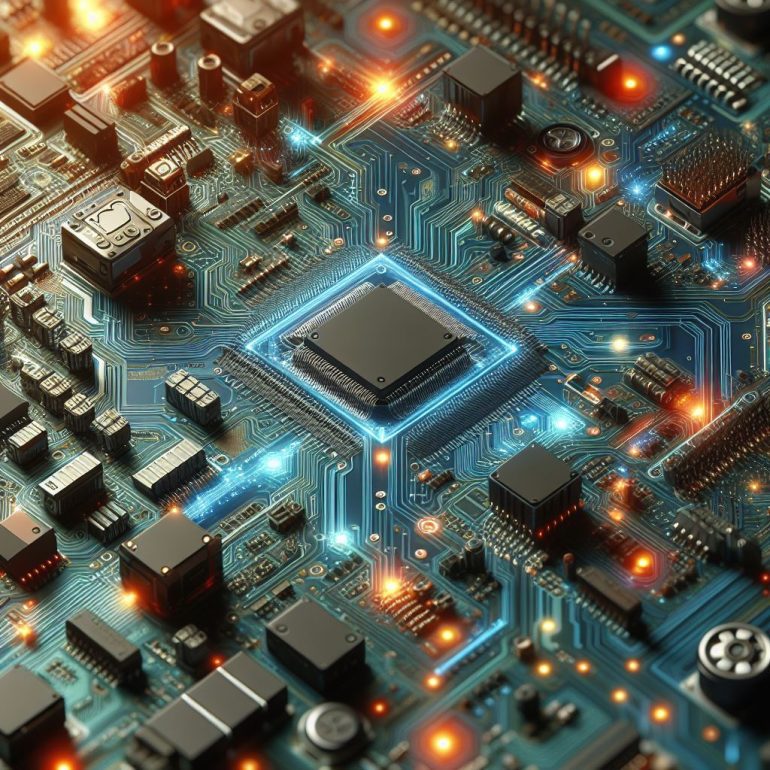- Amazon’s chip lab in Austin unveiled a new server design featuring its own AI chips on July 26th.
- Amazon seeks to reduce dependence on Nvidia’s expensive chips, crucial for its AWS cloud operations.
- The goal is to offer cost-effective solutions for complex data processing while maintaining competitiveness in cloud computing and AI.
- Amazon’s Annapurna Labs acquisition in 2015 has been key in developing these chips.
- Amazon’s Trainium and Inferentia chips are still developing, with the fourth generation of Graviton chips in use.
- Potential improvements in price-performance of Amazon’s chips could reach 40-50% compared to Nvidia’s offerings.
- AWS contributed nearly 20% of Amazon’s revenue in Q1, with significant growth.
- Prime Day saw the deployment of 250,000 Graviton and 80,000 AI chips, leading to record sales of $14.2 billion.
- Nvidia is also advancing with its Blackwell chips, promising enhanced performance.
- Nvidia’s market dominance is backed by a strong client list and a market value of $2 trillion.
Main AI News:
Amazon’s chip development hub in Austin, Texas, is making strides with its latest server design, unveiled on July 26th. During a visit, Amazon executive Rami Sinno highlighted the server’s integration of Amazon’s own AI chips, marking a strategic effort to rival Nvidia, the reigning leader in AI chip technology.
Amazon’s push to develop in-house processors stems from a desire to reduce reliance on Nvidia’s costly chips, which currently power a significant portion of its AI cloud operations. This effort is crucial for Amazon Web Services (AWS), the company’s primary growth driver. The initiative to create more affordable chip options is twofold: it aims to offer customers cost-effective solutions for complex calculations and large-scale data processing while ensuring Amazon’s competitive edge in the dynamic cloud computing and AI sectors. This move aligns with trends set by other tech giants like Microsoft and Alphabet, who are also investing in custom chips to secure their market positions.
Rami Sinno, who leads engineering at Amazon’s Annapurna Labs, pointed out the increasing demand for more economical alternatives to Nvidia’s offerings. The acquisition of Annapurna Labs in 2015 was a strategic decision that positioned Amazon to innovate in chip technology. Although Amazon’s AI chips are still developing, the company has been refining its general-purpose Graviton chips for nearly a decade, with the fourth generation currently in use. Amazon’s latest chips, Trainium and Inferentia, are specialized processors still in their early phases.
The potential impact of these chips is substantial. Reports by AWS’s David Brown suggest that Amazon’s in-house chips could offer a 40-50% improvement in price-performance compared to Nvidia’s solutions, translating into significant savings for AWS clients. AWS, a critical component of Amazon’s business, contributed nearly 20% to the company’s revenue in Q1, with a 17% increase in sales to $25 billion. It commands about a third of the global cloud computing market, while Microsoft’s Azure holds around 25%.
During the recent Prime Day, Amazon showcased its commitment to its custom chip strategy by deploying 250,000 Graviton chips and 80,000 AI chips to support high traffic and streaming demands. Adobe Analytics reported record Prime Day sales of $14.2 billion.
As Amazon advances its AI chip development, Nvidia remains a formidable competitor. Nvidia CEO Jensen Huang has announced the upcoming Blackwell chips, promising significant performance improvements: double the power for AI model training and five times faster inference. Nvidia’s dominant market position is reinforced by its clientele, including Amazon, Google, Microsoft, OpenAI, and Meta. The company’s focus on AI has bolstered its market value to $2 trillion, making it the third most valuable company worldwide, behind Microsoft and Apple. Nvidia is also diversifying with new software tools and specialized chips for emerging applications like in-car chatbots and humanoid robots.
Conclusion:
Amazon’s strategic push to develop its own AI chips signals a significant shift in the competitive landscape of the AI chip market. By reducing reliance on Nvidia and offering more cost-effective solutions, Amazon aims to capture a larger share of the cloud computing and AI markets. This move aligns with industry trends of tech giants creating custom chips to maintain market leadership. The potential 40-50% improvement in price-performance could lead to substantial cost savings for AWS clients, further strengthening Amazon’s position. Meanwhile, Nvidia’s continued innovation and market dominance underscore the intense competition in the AI chip sector, with both companies pushing the boundaries of technology to meet evolving demands.

